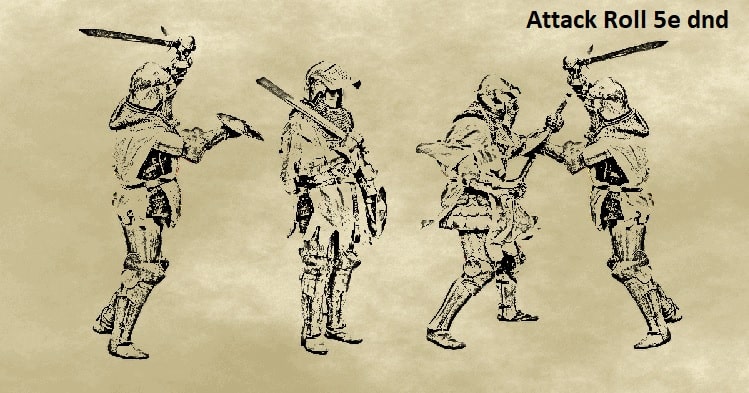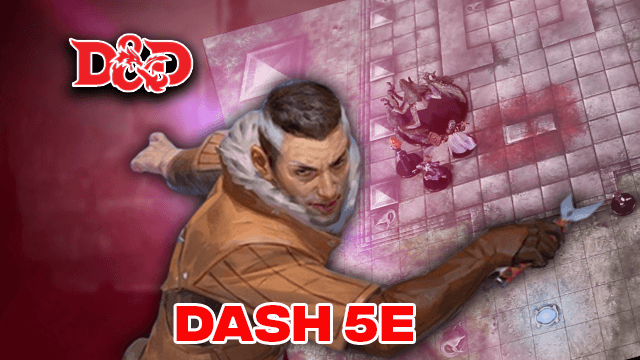Attack Roll 5e| Making Attack Modifier – (Guide) 2023
It is valid for the dnd 5e attack roll if you’re attempting to determine the attacker’s position or pursuing a monster you can only see. Suppose the victim was not in the area you specified. In that case, you’d inevitably fail, but the GM will usually declare that the attempt failed. It’s about whether you correctly predicted the attacker’s place. Cover 5e dnd prevents you from being hit by the enemy’s attack. It allows you to take shelter or hide behind a wall, tree, creatures, and another similar object.
Whenever a monster can’t detect you, you get the upper hand on assault attempts. When you take action while hidden—both unnoticed and unheard—you reveal your position when the assault strikes or fails.
Table of Contents
What do you mean by dnd 5e attack roll?
Understanding the dnd 5e attack roll is crucial for a smooth, well-paced game. So, let us start with the basics of attempts in the dnd 5e attack role.
“Whether you’re striking with a melee weapon, firing a weapon at range, or making an attack roll as part of a spell, an attack has a simple structure: Choose a target… Determine modifiers… Resolve the attack….”

The steps involved in dnd 5e attack roll
- Choose your goal.
- Identify Modifiers
- Make a Rolling Attempt
- Resolve the Situation
- Enhance the skills
Now let us understand each one of this
Pick your goal
While launching an assault, the first stage is to decide what or who you’re going to assault.
You have to understand what you’re targeting when you start rolling. It might be a different species or a field feature, such as a scaffold or that combustible mound of hay. When you move, you must declare that you’re using Assault action but what your aim is.
Identify Modifiers
After choosing your target, you’ll need to figure out all of the attempt’s modifications.
It comprises your Assault Multiplier, any possible advantages (such as a gift or an additional die from the hex), and any shielding benefits for the victim. One should be aware of anything that will adversely affect your role before they begin.
Make a Rolling Assault
Now comes the fun thing:
Choose your approach. When your dnd 5e attack roll comes to a halt, add or remove your penalties. Comparing your overall roll (d20 roll + modifications) to the attacker’s Armor Class after you’ve added the prefixes. To hit, you must fulfill their AC.
Resolve the situation
Kudos when you get a click! It would be best if you harmed the creature. Based on the assault scores of your weapons or spell.
Enhancer of your skill
When it comes to firearms in dnd 5e attack role, your attempt Mods determine by your Strong or Intelligence modifiers. Whenever it concerns choosing which Ability Level to use for their Assault Modifier, there are a few standard “rules of thumb.”
That’s where you’ll do in D&D each time you create an attack rolls 5e.
In D&D, What does making an attack 5e mean?
Making an attempt 5e usually applies the Assault Modifier to strike while rolling an assault.
That’s the amount you’ll use in one of your most fundamental, banal assaults. Fortunately, calculating your Assault Modifier is also relatively simple. Use the formula below:
Ability Score + Proficiency Gain = Attack Modifier
That is all there is to it. It’s as simple as that. Please make a note of that number on your profile card and consider it per day. Things become some more tricky if you’re employing multiple tools. But not excessively. It’s the same equation, only it’s applied differently based on what you’re utilizing.
You utilize the Power modifier when you’re carrying a melee weapon. You utilize your Dexterity mod whether you’re utilizing a ranged firearm. There are, obviously, deviations to these principles. You could use Dexterity as a melee weapon if you have the Finesse weapon characteristics.
Melee attempt: Roll a d20 and apply the outcome to your Competence Modifier, including Str or Dex modifier.
Ranged attempt: Roll a d20 and apply the outcome to your Competence Bonus, which you then use to your Dex multiplier.
Spell attempt:
- Roll a d20.
- Apply the outcome to your Competence Modifier.
- Add your magic throwing descriptor (Int/Wis/Cha, depending on your class).
Examples
- 10 (d20) + 2 (proficiency) + 3 (16 str) = 15 to hit
- 10 (d20) + 2 (proficiency) + 3 (16 str) OR +3 (16 dex due to elegance) = 15 to hit
- 10 (d20) + 2 (proficiency) + 3 (16 dex) = 15 to hit with a spear.
- To strike with a firebolt, add 10 (from the d20) + 2 (proficiency) + 3 (16 cha) = 15.
What are the factors involved in dnd 5e Attack roll?
Your dnd 5e attack roll decides if you hit or miss whenever you perform an attempt. Roll a d20 and apply the required modifications to create dnd 5e attack rolls. The shot hits unless the sum of the dice plus changes exceeded the target’s Armor Class (AC). A character’s AC is upon role-playing, whereas a demon’s AC is in its statistic box.
Modifications to the Roll
When a monster performs a dnd 5e attack roll, the aptitude mod and the subject’s competence gain are the two most frequent adjustments. When a creature rolls an attempt, it employs the modifier specified in its statistic block.
Modifier of ability
Power is the skill modifier for melee weapon assault, whereas Agility is for distant physical attempts. saThis guideline is by guns with the deft or flung attribute.
The ability modifier used in a spell attempt is by the spellcaster’s spellcasting skill.
Bonus for Proficiency
When you strike with a device with which you seem to have competence, and even when you hit with magic, you can apply full competency advantage to the dnd 5e attack roll. Occasionally fate helps or punishes a fighter, leading a beginner to shoot while a veteran misses.
Unseen Assailants and Victims
Rebel fighters frequently try to elude detection by concealing, performing the cloaking spell, or hiding in the background. You have a penalty on the dnd 5e attack roll when attacking a target you can’t see. It is valid if you attempt to determine the target’s location or pursue a monster you can only hear.
If the target isn’t in the area you specified, you’ll inevitably fail. Still, the GM will usually merely declare that now the shot missed, including whether you correctly predicted the attacker’s place. Whenever a monster can’t detect you, you get the upper hand on attempt rolls 5e. Whenever you make concealed, seen, and unheard attempts, you reveal your position when the assault strikes or fails.
Attempt from afar
A ranged method targets a bow or bow, a handaxe, or even other missiles to attempt a target from afar. A monster’s tail may discharge spines. A range assault is for several abilities.
Range Attempt
Ranged attempts should only be on targets within a specific range. If a distant weapon does have a fixed distance, you didn’t challenge a victim outside of that scope.
There are two ranges for certain ranged assaults, including those performed with a crossbow or a short bow. The normal range is the lower number, while the long-range is the more significant amount. Suppose your objective is also beyond average limits. In that case, your attack rolls 5e suffers a penalty, and you didn’t fight a creature at a longer distance.
Close Combat Ranged Attempts
When an opponent is close, it’s harder to aim a ranged strike. If you perform a distant assault with a sword, spells to 5 feet of an enemy monster, you can suffer opposition on the attempted roll.
Melee Attack 5e
A melee attack 5e uses in hand-to-hand combat allows you to assault a foe within range. A melee attack usually involves portable weaponry like a sword, Warhammer, or ax. A melee attack 5e is when a monster uses its nails, horns, fangs, tentacle, or other body parts to strike with its quills, antlers, jaws, claws, or other body parts.
When performing a melee attack 5e, many monsters have such a 5-foot reach and therefore can target enemies within 5 feet of them. As indicated in their bios, some demons (usually ones bigger above Large) possess melee attempts with such a range of approximately 0.5 feet.
Faqs
When a monster performs an attempt roll, the skill factor and the cast’s competence gain are the two most popular adjustments. When a creature rolls an assault, it employs the modifier specified in its statistic blocks.
Roll a d20 and apply all required penalties to create an Assault roll. The attempt strikes if the sum of the score with modifiers equals the attacker’s Armor Class (AC). A subject’s AC is set upon creating characters, while a demon’s AC is in its statistic block.
For example, use a longsword to perform a melee weapon attempt. One can apply your Strength modifier to the strike and damage rolls. When using the firebolt cantrip’s spell attack, you use your spellcasting ability modifier to an attack roll.
If you’re striking a sword, shooting an arrow from the bow, or grappling with your hands, the Attack action is the most frequent in combat. You perform one assault or range strike with this move. The laws governing assaults are in “Making an Attack.”
When a creature rolls an attempt, it employs the modifier specified in its statistic line—enhancer of ability. Power is the ability modifier for melee weapon attempts, whereas Dexterity is the skill factor for range hit points.







